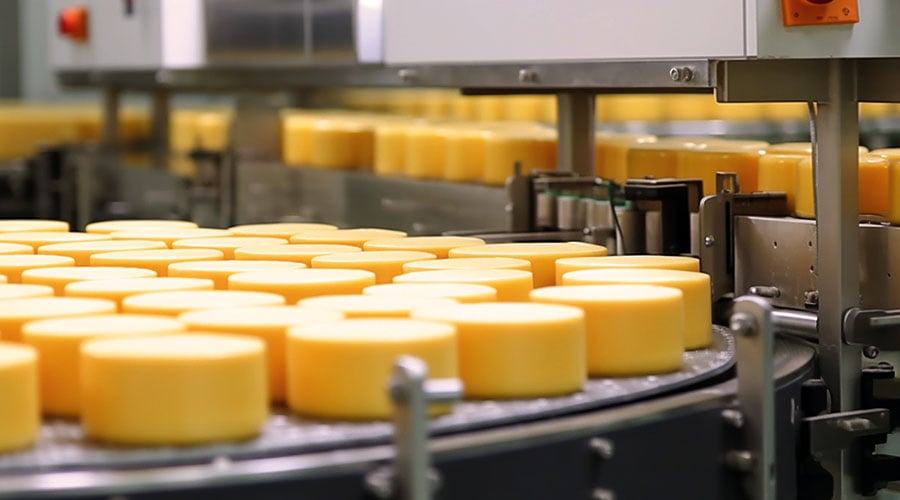A major award-winning cheddar cheese producer was planning a new high-volume plant expansion to meet increased demand and needed an advanced state-of-the-art solution for automation and information systems.
 The image above is for illustrative purposes only and may not accurately represent the appearance of the client's facility.
The image above is for illustrative purposes only and may not accurately represent the appearance of the client's facility.
Challenge
The project consisted of multiple phases of construction that involved commissioning new equipment to integrate with the existing infrastructure. An important factor was determining how to seamlessly integrate systems from multiple process system OEMs (Original Equipment Manufacturers). When repurposing existing equipment currently being used in production, such as silos and tanks with new control hardware, there was very little downtime and minimal margin for error.
Solution
Cybertrol implemented a solution that included:
- New receiving area, HTST (High-Temperature Short-Time) pasteurization, vats, DMC, SMC, seven block forming towers, five CIP (Clean-in-place) skids, multiple packaging lines, three whey separators, cream heater and storage tanks, COW (Condensate of Whey) water silos, whey storage silos, crystallizers, upgraded evaporation process, and a new larger dryer with powder packaging
Cybertrol acted as a consultant for our customer, providing:
- Specification development
- Review of OEM vendors’ proposals
- Factory acceptance testing of OEM software
- Integration with OEM systems
- Design and configuration of new IT and SCADA server system, complete with AVEVA Wonderware ArchestrA SCADA system
- Configuration of electronic reports including CIP, production area shift reports, and quality reports
- Use of safety PLCs throughout the system for process safety
- Packaging label barcode/information integration with OEM packaging lines
Results
The facility was able to double cheese throughput and handle the extra whey byproduct with an expanded evaporator and whey storage controls. City water usage for the plant was reduced by reusing the extra COW water for their new CIP systems. New boiler systems, heat regeneration, and utility monitoring helped gather information to reduce energy consumption. All areas of the facility were integrated seamlessly, even though sub-areas were supplied by different OEMs. In addition to planned capacity improvements, the customer has greater visibility into the plant with electronic reports.